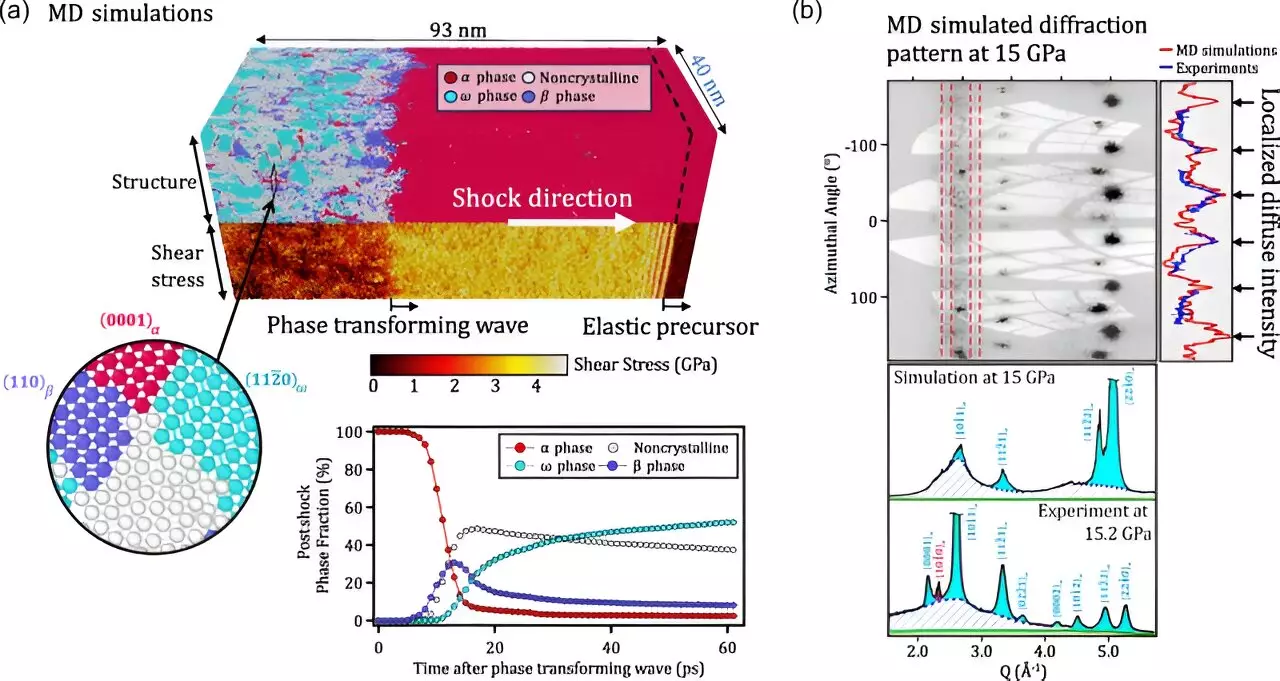In the realm of modern technology, materials serve as the bedrock upon which advancements are built. This is especially true for applications in extreme environments, such as nuclear energy systems and military technologies. For these fields, materials must exhibit exceptional durability and resilience against the forces of temperature, pressure, and environmental corrosives. As the demand rises for innovative solutions that are not only effective but also sustainable and cost-efficient, understanding the microscopic behavior of materials under stress has become a pressing priority for researchers and scientists.
At the forefront of this critical research effort are the scientists at Lawrence Livermore National Laboratory (LLNL), who have recently conducted an exhaustive study on the behavior of single-crystal zirconium when subjected to extreme high pressure. Their findings, published in prominent journals such as Physical Review Letters and Physical Review B, reveal that zirconium deforms in complex and unexpected manners under such conditions. This study is pivotal, as it unveils new dimensions of how metals respond when compressed, which could hold the key to developing next-generation material that aligns with the demands of modern applications.
When metals encounter high-stress conditions, they employ several mechanisms to relieve shear stresses. These include dislocation slip, crystallographic twinning, shear-induced amorphization, as well as phase transitions and fracture. Saransh Soderlind, an LLNL scientist and the study’s lead author, emphasizes that understanding these mechanisms at a microscopic level is fundamental for creating predictive models of material performance. Typically, metals undergo plastic deformation during compression due to dislocation movements along specific crystallographic planes. However, zirconium presents a unique case; its crystal structure undergoes transformation under pressure, adding layers of complexity to its deformation behavior.
In their pursuit of knowledge, the LLNL team utilized advanced experimental techniques, such as femtosecond in-situ X-ray diffraction. This allowed them to observe the deformation of single-crystal zirconium in real time over nanosecond timescales. Remarkably, the researchers uncovered atomic disorder—a phenomenon previously unrecorded in any elemental metal—and identified multiple pathways for crystal structure transformation. This discovery is significant not only for zirconium but also for the broader understanding of metal behaviors under similar extreme conditions, suggesting a rich tapestry of atomic movement that may be prevalent in various materials.
The unprecedented insights gleaned from this study not only revolutionize our comprehension of zirconium but also set the stage for configuring advanced materials for various applications, particularly in the nuclear industry. Zirconium alloys are already favored for their superior strength and minimal neutron absorption, and with this newfound knowledge of their behavior under pressure, their application could expand further into other extreme chemical environments. As scientists continue to decipher the complexities of materials like zirconium, we inch closer to crafting the more resilient, lighter, and sustainable materials that modern technology necessitates. The journey into the microscopic world of materials is just beginning, promising a future rife with possibilities for innovation in high-stakes environments.


Leave a Reply